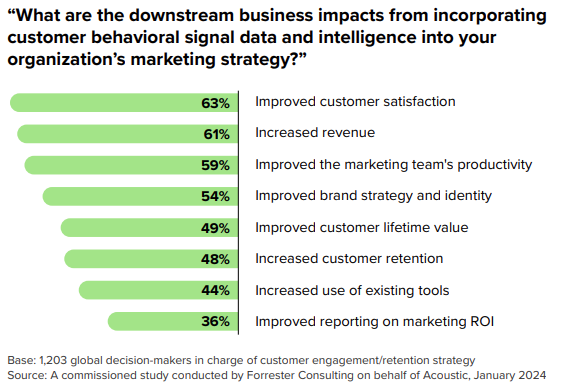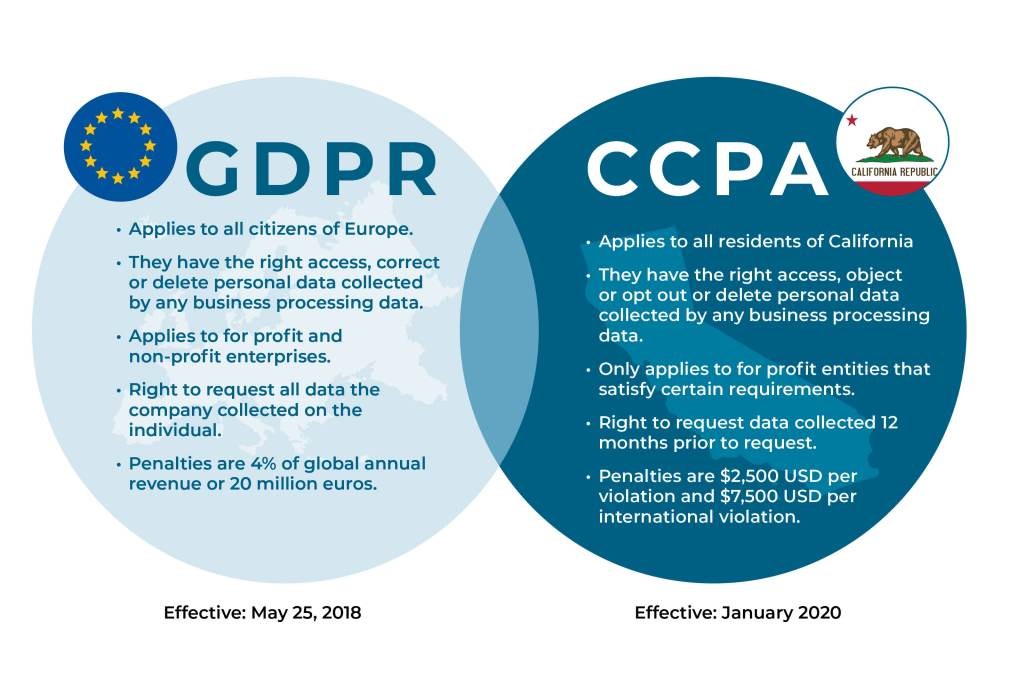“Most of the world will make decisions by either guessing or using their gut. They will be either lucky or wrong.” – Suhail Doshi, chief executive officer, Mixpanel.
Data is a critical asset for organizations. The departments that compose an organization must know how to leverage data in their daily efforts. The marketing departments, specifically, must understand and utilize vast amounts of data to drive business decisions, enhance customer engagement, and gain a competitive edge. However, growing concerns around consumer privacy and stringent regulatory pressures pose significant challenges to overcome.
In my previous blog, I mentioned how behavioral data can be used to build a Customer 360. In this new blog, I talk about the concerns that limit the collection and therefore usage of behavioral data.
How can organizations collect Behavioral Data for Business Insights
What is behavioral data, and what advantage can it give to teams that can properly leverage this asset?
Behavioral data includes customer interactions with a company’s offerings. Snowplow states this data paints a clear picture of business activities. It comes from both digital and physical sources. Understanding the structure of behavioral data, which includes the main entity (usually the user), the event (the action taken), and contextual properties, is crucial for effective utilization. Tracking user clicks, page views, and purchase history can provide insights into customer preferences and behavior patterns.
The applications of Behavioral Data in Marketing
Behavioral data is invaluable for developing various marketing applications. Churn propensity models, which predict the likelihood of customers discontinuing their relationship with a company, can be enhanced with behavioral insights. Similarly, recommendation engines that personalize product suggestions based on past behavior, and fraud detection systems that identify unusual patterns, are all powered by behavioral data. These applications not only improve the customer experience but also drive business growth by increasing customer retention and sales.
Challenges in Data Utilization
Utilizing behavioral data comes with its own set of challenges. Technical issues such as tracking prevention, data reconciliation, and scaling can hinder effective data usage. Organizational challenges, including communication within teams and maintaining compatibility across systems, also play a role. Compliance with regulations adds another layer of complexity. Solutions like Snowplow’s first-party tracking, establishing a single source of truth, and ensuring transparent data lineage help address these challenges. Additionally, investing in data integration and management tools can streamline the process and enhance data accuracy.
Building Consumer Trust in Data Handling
Consumer trust in data handling varies significantly across industries. However, overall trust in company data handling remains low. This trust deficit is a crucial barrier for marketers who rely on consumer data for personalized marketing efforts. Building trust involves demonstrating a commitment to protecting consumer data through transparent and ethical data practices.
Consumers are increasingly cautious about sharing their data. They are more aware of the risks associated with data mishandling and are likely to discontinue business with companies that do not protect their information adequately. This shift in consumer behavior underscores the importance of building robust data handling practices to maintain and enhance consumer trust. Companies should offer clear privacy policies. They can provide data sharing options and inform consumers about data usage.
Navigating the Regulatory Landscape
The introduction of stringent regulations like the General Data Protection Regulation (GDPR) in Europe and the California Consumer Privacy Act (CCPA) in the United States has significantly impacted how companies collect, store, and use consumer data. These regulations aim to provide consumers with greater control over their personal information and ensure that companies adopt transparent data practices. Companies must stay abreast of these regulations to avoid hefty fines and reputational damage.
Companies must adopt proactive compliance strategies. This includes effective data mapping to categorize and manage collected data. Robust identity and access management practices ensure that only authorized personnel have access to sensitive data. Additionally, companies must develop clear procedures for handling data removal and transfer requests to comply with regulatory requirements. Implementing these strategies not only ensures compliance but also builds consumer confidence in the brand.
One of the key recommendations from this McKinsey article is to integrate privacy considerations into the design of applications and infrastructure from the outset. This “privacy by design” approach ensures that data protection measures are built into the system rather than added later. Transparent communication about data collection and usage further enhances consumer trust. Companies can use privacy impact assessments (PIAs) to identify and mitigate data privacy risks during the development phase of new projects.
Responsible data handling is not just about compliance; it can also be a significant differentiator in the market. Companies that prioritize data privacy and security can build stronger relationships with their customers, leading to increased loyalty and a competitive advantage. By positioning themselves as trustworthy custodians of consumer data, businesses can attract and retain customers who value privacy. This approach can also enhance the company’s reputation and lead to positive word-of-mouth marketing.
Choosing the right data warehousing tool
Snowflake is a powerful data platform that provides secure, scalable, and efficient data storage solutions. It offers several features that make it ideal for storing behavioral data securely:
- End-to-End Encryption: Snowflake ensures that data is encrypted both in transit and at rest, protecting it from unauthorized access.
- Robust Access Controls: Snowflake’s role-based access control system allows administrators to grant permissions based on job roles, ensuring that only authorized users can access sensitive data.
- Data Masking: This feature allows sensitive information to be obfuscated, ensuring that personal data is protected while still allowing for analysis.
- Compliance: Snowflake is compliant with various regulatory standards such as GDPR, HIPAA, and SOC 2, making it easier for companies to adhere to data protection regulations.
- Scalability: Snowflake’s architecture can handle vast amounts of data, allowing businesses to scale their data operations without compromising on performance or security.
These features make Snowflake an excellent choice for businesses looking to store and manage their behavioral data securely. Read my blog on Snowflake’s involvement in TicketMaster’s data breach (spoiler: there was no breach of the Snowflake platform)
Strategic data management for marketers
The personalization landscape is evolving rapidly, with Big Tech companies creating “walled gardens” around consumer data and the deprecation of third-party cookies by Google.
According to Forbes, these developments, combined with declining marketing budgets, make it challenging for marketers to balance privacy concerns with the need for personalization. Marketers must find innovative ways to gather and use data without relying on third-party sources, ensuring that they can still deliver personalized experiences to their customers.
First-party behavioral data is emerging as a crucial element for privacy-focused personalized experiences. Companies that excel at using first-party data can generate up to 40% more revenue, as highlighted by Forbes. This data enables marketers to create more relevant and timely interactions, leading to better customer engagement and higher ROI. By analyzing first-party data, companies can identify trends and preferences, tailor their marketing messages accordingly, and provide personalized recommendations that resonate with individual customers.
Strategies for effective data utilization
To bridge the gap between data collection and actionable insights, companies must prioritize real-time data collection. The ability to gather and analyze data as it happens provides a significant advantage in understanding customer behavior and preferences. However, as noted by Forrester Consulting for Acoustic, while 75% of marketers recognize the importance of real-time data, over 60% struggle to incorporate these insights into their engagement strategies. Implementing advanced analytics platforms can help businesses process real-time data more efficiently and derive meaningful insights.
Worth the investment
Investing in technologies that facilitate easy data gathering, analysis, and action is essential. Additionally, developing a robust data strategy that includes documenting use cases and prioritizing high-impact applications can enhance the effectiveness of personalization efforts. Marketers should also consider conducting regular training sessions for their teams to ensure they are up-to-date with the latest data management practices and tools. The future of personalization hinges on the strategic use of first-party behavioral data.
As third-party data sources become less accessible, companies must develop robust strategies for collecting and utilizing first-party data. Demonstrating ROI through improved customer engagement and retention will be key to justifying investments in data infrastructure and analytics. Businesses should also keep an eye on emerging technologies and trends that can further enhance their data collection and analysis capabilities, such as artificial intelligence and the Internet of Things (IoT).
Demonstrating ROI through improved customer engagement and retention will be key to justifying investments in data infrastructure and analytics.
In conclusion
A holistic approach to tracing customer interactions across multiple touchpoints is essential for understanding the customer journey. By combining historical data with real-time signals, marketers can gain a comprehensive view of customer behavior and intent. This visibility allows for more precise and effective engagement strategies. Mapping out the customer journey can help identify pain points and opportunities for improvement, enabling businesses to optimize their interactions and enhance the overall customer experience. To maximize the value of behavioral data, companies need tools that can capture, analyze, and act on data effectively. This involves transforming raw data into actionable insights that can inform marketing decisions. Understanding customer intent, predicting behavior, and identifying propensity are critical components of this process. Businesses can use predictive analytics to anticipate customer needs and tailor their marketing efforts accordingly.
In conclusion, the responsible handling of consumer data and the effective utilization of behavioral data are paramount for modern marketing success. As consumer awareness of data privacy grows and regulations become more stringent, companies must adapt their practices to meet these new expectations.










